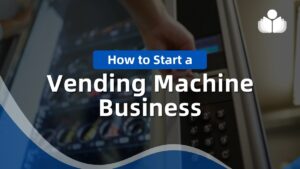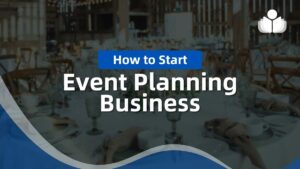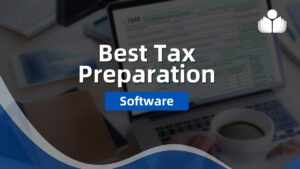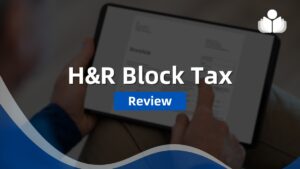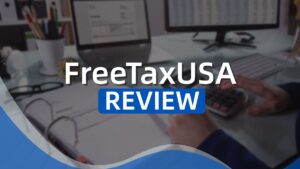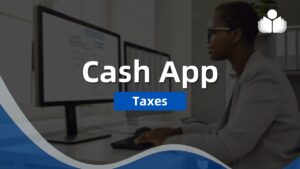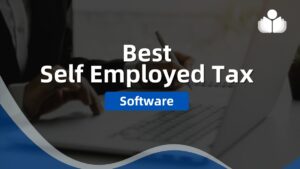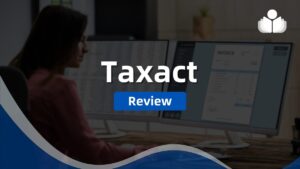© Copyright Carter McNamara, MBA, PhD, Authenticity Consulting, LLC.
Adapted from the Field Guide to Leadership and Supervision in Business and the Field Guide to Leadership and Supervision for Nonprofit Staff.
There are numerous types of activities that learners can conduct to reach their learning objectives — arguably the best activity is life itself. The learner can conduct one type of activity below or several. The list actually comprises what might be called types, modes, and methods of learning and even some learning aids.
Note that conducting any of the following activities (or types of activities) will not by themselves necessarily generate learning. Ideally, the following are selected during the systematic design of a training and development experience, whether self-directed or other-directed.
Sections of This Topic Include
- Some Typical Ways of Learning
- Miscellaneous Other Ways
- Some Tangible Results that Can Be Used to “Document” Learning
Also, consider
Related Library Topics
Learn More in the Library’s Blogs Related to Activities for Learning and Development
In addition to the articles on this current page, also see the following blogs that have posts related to Various Ideas for Learning Activities. Scan down the blog’s page to see various posts. Also, see the section “Recent Blog Posts” in the sidebar of the blog or click on “Next” near the bottom of a post in the blog. The blog also links to numerous free related resources.
- Library’s Career Management Blog
- Library’s Human Resources Blog
- Library’s Leadership Blog
- Library’s Supervision Blog
- Library’s Training and Development Blog
Different Activities for Learning
Training methods are either on the job, implemented outside the organization, or a combination of both. The following is a brief overview of rather typical methods of development (in alphabetical order):
Apprenticeships
For centuries, apprenticeships were the major approach to learning a craft. The apprentice worked with a recognized master craftsperson. Particularly during times of low unemployment, businesses are eager to get any kind of help they can find. Seeking an apprenticeship may be a very useful and effective way to eventually develop a new skill.
Career Counseling
Hopefully, learners have the opportunity to work with their supervisors to develop career plans which identify areas for improvement or advancement, how those areas can be addressed, and when. See Career Advancement.
Classrooms and Workshops
Workshops, seminars, convention sessions, etc. are useful, in particular, for highly focused overviews of a particular subject or training about particular procedures.
Coaching
Coaching is becoming a very popular means of development and often includes working one-on-one with the learner to conduct a needs assessment, set major goals to accomplish, develop an action plan, and support the learner in accomplishing the plan. The learner drives these activities and the coach provides continuing feedback and support. See Coaching.
Continuing Professional Development
Many professions require verification of ongoing training to retain certification, e.g., social workers, some fields of law, nurses, etc. Professionals must stay up-to-date in the views and practices necessary to lead and manage in today’s organizations. There seems to be an increasing number of universities, colleges, and training centers associating continuing education units (CEUs) with their courses and workshops.
Continuous Learning
Continuous learning is learning how to learn. Typically, this involves developing skills in reflection, which is the ability to continually inquire and think about experience to draw conclusions and insights. It also involves the ability to conceptualize the learning process. Continuous learning is often associated with the concepts of systems thinking and organizational learning. Continuous learning is NOT about continually taking courses — it’s about developing skills in reflection and inquiry — it’s about learning how to learn so that your life and work experiences become your own learning lab. Organizations and other environments
are changing rapidly. Therefore, it’s extremely important to continually be aware of those changes and to reflect on them and learn from them, as well.
Courses
Universities, colleges, and training centers often have a large number of courses in management, professional and personal development. If the learner is looking to build a skill, then he or she must actually apply new information from these courses — otherwise, the learner is collecting information (hopefully, knowledge), rather than building skills.
Distance Learning (eLearning, Virtual Learning)
Distance learning has become a mainstream approach in training and development. This typically includes learning by getting information and/or guidance from people who are not face-to-face with the learner, e.g., learning via satellite broadcast, broadcast over the Internet, e-mail or postal mail correspondence, etc. Some people consider online learning or e-learning (e.g., information, tutorials, etc., available on diskette, CD-ROM, over the Internet, etc.) to be distance learning, as well.
- Distance Education: An Overview
- Glossary of Distance Education
- Statistical Analysis Report: Distance Education in Higher Education Institutions
- E-Learning and Distance Learning Pros and Cons
- How to Design An Elearning Course on a Budget
- 10 Steps to Award-Winning E-Learning Design Process
- Teleseminars, Stage Fright, and More
- Training Blogs – Using the Web to Train the World
- Is Classroom Training Dying?
- Using Mobile Technologies in Education and Training
- Are Hybrid Online/Classroom Programs the Answer?
- Flipping Classrooms: New Look for Experiential Training
- Making Digital Training “An Affair to Remember”
Internships
Internships are offered usually by organizations to college students wanting to find work experience during the summer months. The internships offer precious, real-life job experience and the organizations often get skilled, highly dedicated service. Many times, interns go on to be hired by the organizations, as well.
Job Assignments
Job assignments are wonderful opportunities from which to learn. We just aren’t used to thinking of them that way. To cultivate learning, consider having employees write short reports, including an overview of what they did, why they did it, what areas of knowledge and skills were used, how the job might have been done better, and what areas of knowledge and skills would be needed to improve the job.
Job Rotations
This can be one of the most powerful forms of development, allowing learners to experience a broad range of managerial settings, cultures, and challenges.
Journaling
Journaling is regularly writing down one’s thoughts about past or current experiences and thoughts. A person can significantly deepen and remember their learning by using journaling. See Journaling.
Lectures
Lectures, or focused presentations by experts on subject matter, are held in a wide variety of locations, not just in classrooms. Professional associations often bring in speakers. Guest lectures are often sponsored by local universities, colleges, and training centers, and announced to the public. Many times, the lectures are repeated over local radio and television.
Management Development Programs
Local universities, colleges, and training centers usually offer these programs. Carefully review their program content and design to ensure that training includes real-life learning activities during which learners can develop skills for the workplace. See Management Development.
Memorizing
Memorization is one of the most frequently used methods of learning and it refers to activities that can help the student to learn by committing the new information to memory. An example is repeating the definition of a term until the student can define it correctly without referencing a written definition. See Memorizing.
Mentoring
Hopefully, learners find experienced managers in the workplace who are willing to take learners “under their wing” and provide ongoing coaching and mentoring. See Mentoring.
Note-Taking
Note-taking is perhaps the most frequently used method of learning during lectures. It involves writing the most important information conveyed by the speaker. Experienced note-takers can efficiently separate what is most important to write down and what is not.
Off-the-Job Training
Off-the-job training occurs when an employee works after hours to learn. See Training Methods: On Job Training and the Job Training Methods.
Online Training
There are an increasing number of approaches to online learning. See Online Learning. Sources of online training include learning from computer diskette, CD-ROM, the Internet or Web-based training, etc.
- Effective Use of Mobile Apps – New Technology in Training
- A Day in the Life – Hybrid Education
- Hybrid or “Blended” Education – After Week One
On-the-Job Training
This form helps particularly to develop the occupational skills necessary to manage an organization, e.g., to fully understand the organization’s products and services and how they are developed and carried out. Also see:
- On the Job Training (Definition)
- What is On the on-the-job training?
- On the Job Training
- Coaching Skills for On-the-Job Trainers
Other-Directed Learning
This includes having someone other than the learner identify the training goal, methods to achieve the goal and approaches to evaluating the training and progress toward achieving the training goal. See Ways to Look at Training and Development Processes: Informal/Formal and Self-Directed/Other-Directed.
Orientation to New Jobs or Roles
A carefully developed procedure for orienting new employees is very helpful for getting employees “off on the right foot” when starting their jobs. See Employee Orientation.
Peer-Based Methods
This includes formats where peers focus on helping each other learn, e.g., by exchanging ongoing feedback, questions, supportive challenges, materials, etc. See Peer Learning.
Portfolios
Portfolios are a collection of various results from a learning and development experience, for example, essays, presentations, artwork, and journals that effectively convey the nature and extent of learning from the experience. See Portfolios — and Learning and Development Tool.
Professional Organizations
A wide variety of professional organizations often offer courses, seminars, workshops, and sessions from conventions.
Reflection
Reflection is thinking about one’s past and/or current experiences in life in order to learn from them. Reflection can be done in a scheduled and orderly way or it can occur in a spontaneous and unfolder manner. See Reflecting.
Self-Directed Learning
Highly motivated learners can usually gain a great deal of knowledge and skills by identifying their own learning objectives, how to meet those objectives, and how to verify they’ve met the objectives, as well. See Strong Value of Self-Directed Learning in the Workplace.
Storytelling
Storytelling used to be viewed only as a means of entertainment. However, we coming to understand that it also is a very powerful means for enlightenment, when listeners are guided to reflect on the stories and to identify themes and patterns that emerge — and tell us about ourselves, our lives, and our work. See Storytelling.
Taking Tests
Although tests are usually used to verify and evaluate new learning, the experience of taking the test can be a powerful means to deepen the learning about the subject matter in the test, because the student has to recall the new information and affirm it by writing it down in the test. See Taking-Tests.
Tutorials
Tutorials include guidance to proceed through learning some technique or procedure, e.g., a tutorial on using a computer software package. There are an increasing number of online tutorials (tutorials available on diskette, CD-ROM, over the Internet, etc.).
Miscellaneous Other Ways
- Training Using Life Simulations
- 52 Free Development Opportunities for Nonprofit Staff
Some Tangible Results that Can Be Used to “Document” Learning
If you or others are seeking to verify results from your training and development, it helps to produce tangible items that can be evaluated to discern if you’ve achieved your training goals and objectives. The Sample Learner’s Results come courtesy of The Union Institute, which suggests the list to learners when developing their own learning agreements.
Go to the main Training and Development page.
For the Category of Training and Development:
To round out your knowledge of this Library topic, you may want to review some related topics, available from the link below. Each of the related topics includes free, online resources.
Also, scan the Recommended Books listed below. They have been selected for their relevance and highly practical nature.
 Sections of this topic
Sections of this topic







